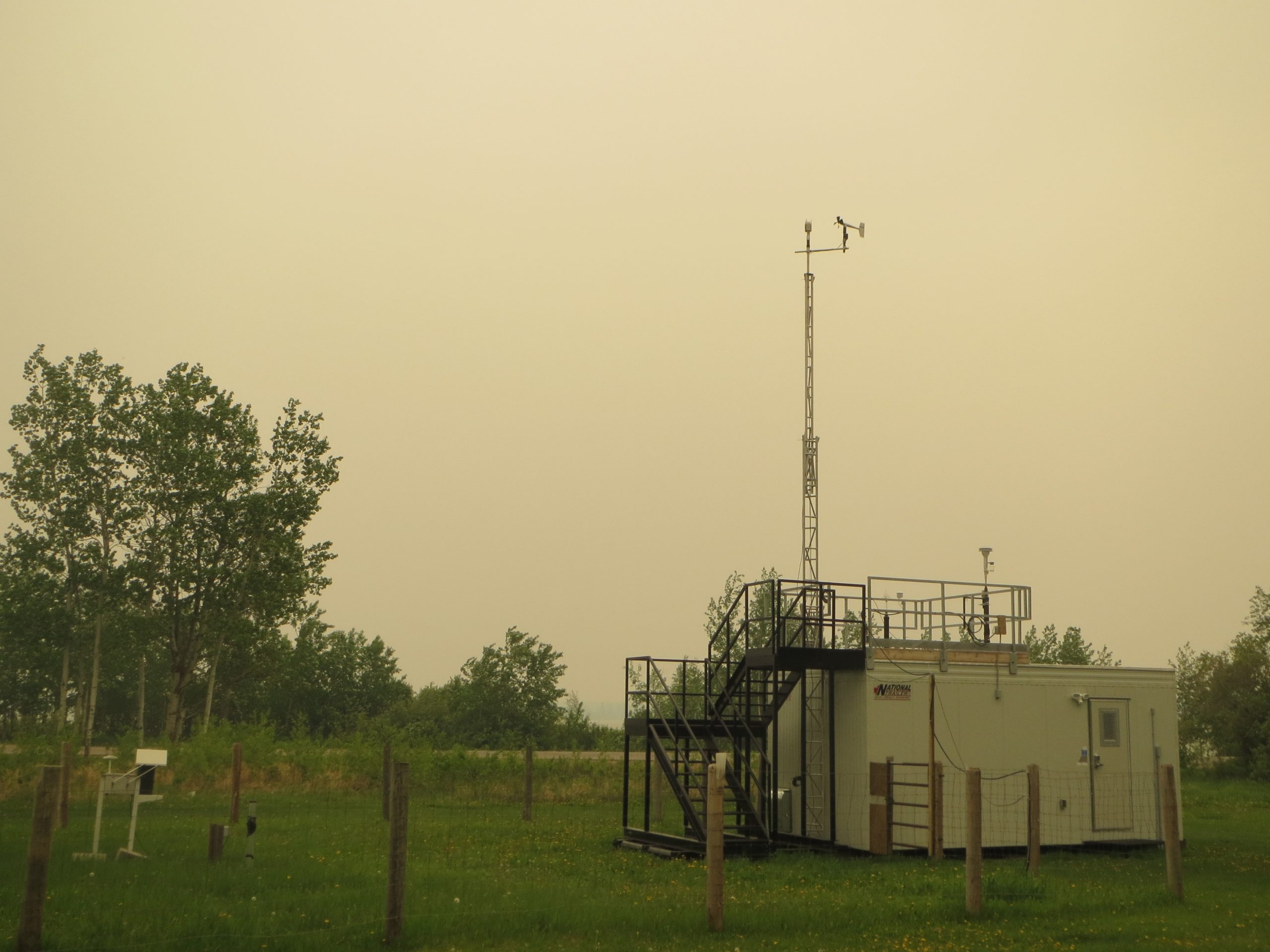 Wildfires are a natural part of vast forested areas like we have in Alberta and our neighbouring provinces. Wildfire smoke can be carried hundreds or thousands of kilometres from the fire zone. Residents of Alberta have experienced this during many previous summers, with smoke from major wildfires in British Columbia and the northern United States affecting air quality.
Wildfires are a natural part of vast forested areas like we have in Alberta and our neighbouring provinces. Wildfire smoke can be carried hundreds or thousands of kilometres from the fire zone. Residents of Alberta have experienced this during many previous summers, with smoke from major wildfires in British Columbia and the northern United States affecting air quality.
Wildfire smoke is a complex mixture of gases, particles, and water vapour that contains:
- Ozone
- sulphur dioxide
- nitrogen dioxide
- carbon monoxide
- volatile organic compounds
- fine particulate matter (PM5)
These gases and fine particles can penetrate our lungs and bloodstream, leading to adverse health effects. Most of these components of smoke are included in the calculation of the Air Quality Health Index (AQHI), which is a general measure of air quality as it pertains to human health and is accompanied by health messaging for each risk level. As smoke levels increase, our health risks increase.
Preparing for wildfire smoke
Anyone can be affected by wildfire smoke. However, higher-risk populations include small children, pregnant people, seniors, people with lung or heart conditions, and people involved in outdoor work or strenuous exercise.
- Be informed. Stay tuned to the Fort Air Partnership website or Fort Air Partnership Facebook page for updates on air quality. Fort Air Partnership monitors and collects air quality data 24 hours a day, seven days a week, using ten continuous monitoring stations and 16 passive monitors. We are constantly keeping our Airshed residents informed about air quality and will share information on the Air Quality Health Index and any air quality advisories that may be issued when air quality is affected by wildfire smoke. Refer to the AQHI health messaging chart and download the WeatherCan app on your smartphone to be alerted when air quality is affected by wildfire smoke in your area.
- Reduce exposure. Reduce your exposure to wildfire smoke if and when it is in your area. Examples of actions you can take as per the Government of Canada Wildfire Smoke 101 factsheets include:
- Limit outdoor activity and strenuous physical activities. If you have difficulty breathing, stop your activity altogether.
- Keep your windows and doors closed in your home and vehicle as long as the temperature is comfortable.
- Use recirculation settings on your heating and air conditioning system to prevent wildfire smoke from entering your home or vehicle.
- Especially if anyone in your home has preexisting respiratory or cardiovascular conditions, consider using an air purifier.
- Visit community centres, libraries, and shopping malls. These places often have cleaner filtered air and can provide a break from wildfire smoke.

